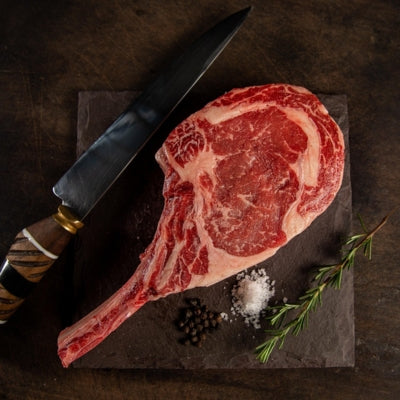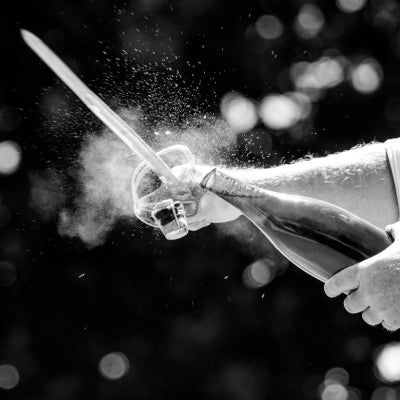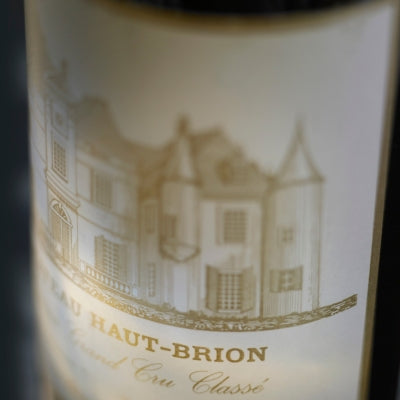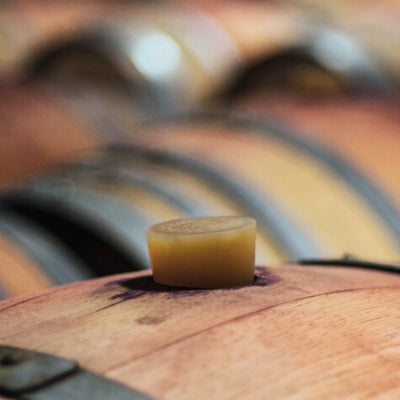
Late Summer Food-Pairing: Reverse-Seared Ribye
There are few pleasures as gratifying and visceral as a freshly grilled steak. Before the weather gets cold, consider trying a new technique that yields excellent results.
The reverse sear is a special way to cook steak, and involves low heat first and a blast of heat at the end. Cooking your steak low and slow does two things: it allows for the temperature to become consistent all the way through the steak, and helps evaporate moisture from the steak. When it’s time to sear the meat at the end of the cooking process, this drier exterior will form a more beautifully browned crust. When you put a cold steak onto a hot grill, that cold meat in the middle doesn’t have time to slowly come up to temperature, and you’re often left with an undercooked middle and an overcooked exterior.
This technique doesn’t just work on steaks. For any large roast or bird, low temperature at the beginning can help create consistent results. You’ll find that the margin of error on an expensive cut of meat is lowered as well, since the meat’s already been brought up gently in temperature and is not being shocked to the heat like a piece of cold meat would be.
The Reverse Seared Rib-Eye:
Ingredients
- One thick-cut ribeye or côte de boeuf, at least 1 pound, up to 2-3 pounds. Working with a steak that’s at least 1 inch or more thick is preferable.
- Kosher salt (Diamond Crystal brand is preferred)
- Cracked black pepper
Supplies
- Cast Iron skillet
- Flat pan or cookie sheet with wire rack insert
- Instant-read meat thermometer
Steps
- Rest your steak on the countertop for at least one hour, or up to 2-3 hours for larger cuts or roasts. While it rests you can press paper towels into the surface to help dry it out. This will help with forming a crust later. When you’re almost done resting the steak, turn your oven to 250 F.
- Season your steak liberally with salt and black pepper. Press the cracked black pepper into the surface of the steak with the back of a spoon.
- Place the steak on a wire rack set into a cookie sheet or oven pan lined with foil or parchment, to reduce mess. The point of this rack is to allow hot air to circulate underneath the steak as it slowly comes to temperature.
- Put the pan in the oven for 45 minutes. If you’ve rested the steak properly, it should only take about this long to get your steak ready to sear.
- When your steak is up to a temperature of about 125-135 using an instant-read thermometer, pull it out of the oven
- On the stovetop*, get your cast iron skillet screaming hot, to where it’s just starting to smoke. There’s no need to use any oil, although if you need to, use a high smoke point oil like grapeseed or canola.
- Sear the steak for one minute each side, using tongs to flip. You can also sear off the fat cap on the ribeye to create some yummy crust. The steak will be so dry from its time in the oven that is will only take a minute per side to form a beautiful crust. This step produces a lot of smoke, so be sure to open your kitchen windows and get your hood fan going. Be careful not to overdo your time, as you may overcook your steak.
- The steak is ready to eat immediately, since all the low-temp resting has already occurred in the oven. If you need to wait to eat, you can tent with foil or rest in a low oven around 200 F.
*this searing step can be done on a hot grill as well.
The core of this recipe is adapted from Jess Pryle’s technique, found here. J. Kenji López-Alt has a wonderful description of the science behind it here, with another good recipe. I have gotten absolutely great results cooking steaks with this technique, and I’ve also applied it to prime rib, chuck roast, chicken and turkey.
What to drink with your ribeye? Well, it’s hard to say no to Bordeaux and steak. But northern Rhône Syrah and Super Tuscans can certainly hold their own. Here’s a few perfect pairings to consider:
2005, Smith
Haut Lafitte
Muscular, rich and bold Bordeaux that’s entered its drinking window. This is a silky Bordeaux that’s ready to stand up to steak.
2012, Guigal,
Cote Rotie Landonne
A smoky, powerful, but elegant Côte Rôtie from a balanced vintage will do great without getting in the way of the steak. Consider this one:
2010,
Sassicaia
Beautifully persistent and chiseled in the glass, the 2010 is ultimately all about energy. This is going to be a fascinating vintage to follow.



